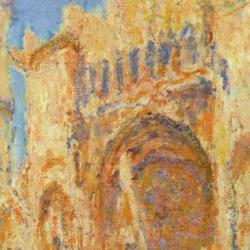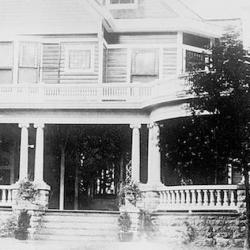The title essay of John Summerson’s Heavenly Mansions sets Gothic architecture in a story of the architecture of fancy. He begins with doll houses, and moves to aedicules, originally small buildings holding the image of a god that eventually became purely decorative alcoves. In Gothic, the ornament is turned into the structure: “Instead of the aedicule serving to adorn the structure, the structure was made the slave of the aedicule” (14).
One implication of this aedicular interpretation of Gothic is to highlight the continuity between classical and Gothic, to fit Gothic into the Renaissance of the 12th century. Summerson offers a striking comparison of a wall painting from Pompeii and the south porch of Chartres Cathedral.
Another implication is that Gothic’s distinctive contributions to architecture are re-interpreted as aesthetic rather than technical. The ribbed vaults of many Gothic cathedrals are not, he argues, a solution to a problem of engineering. They are aesthetically inspired: “The rib is simply an ornamental reinforcement of the angels of the vault; the fact that it projects from the vault is of no structural importance whatever. . . . No; the vaulting rib, like almost everything else in Gothic architecture, originates in an aesthetic intention. The ribbed vault, in fact, may be compared with the airy pergolas which make their frequent appearance in the fantasy-architecture of Pompeii” (15). Gothic aims at “the destruction of mass, the creation not so much of upward flight, as of suspension in space, the creation of an architecture wholly independent of the exigencies of gravity” (16). A heavenly mansion, whose details fractally repeat the whole (26, citing Wilhelm Worringer).
One suspects that there is more than aesthetics at work. Could a medieval architect have adorned the church’s interior with “ribs” without thinking, or being told, that the church is new Eve born from the side of the Last Adam?











